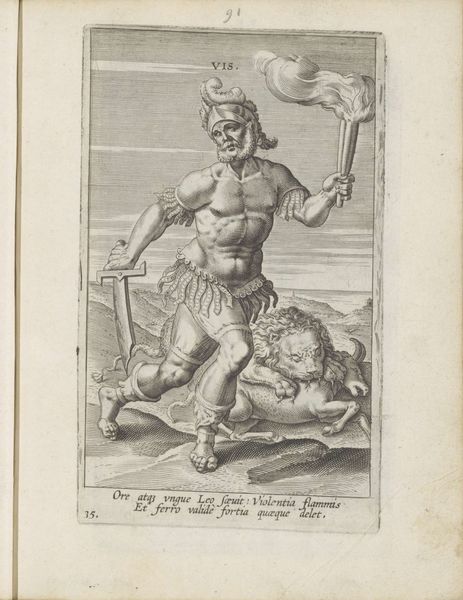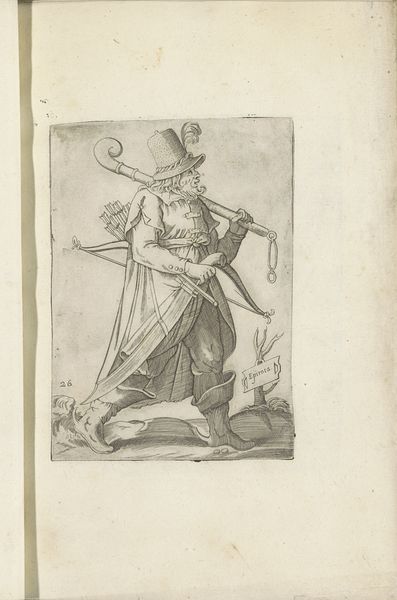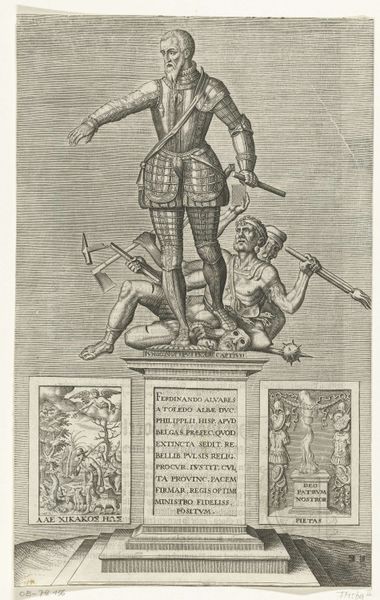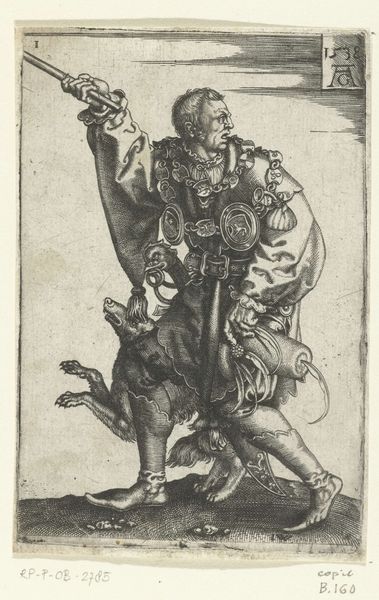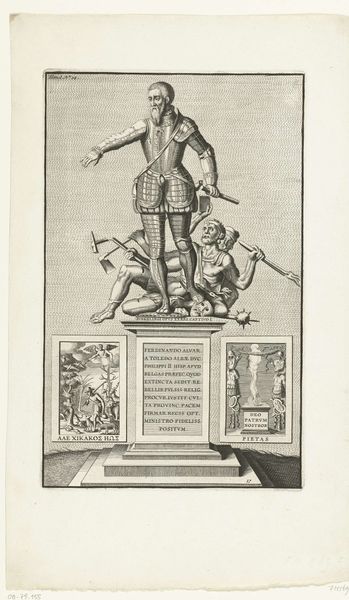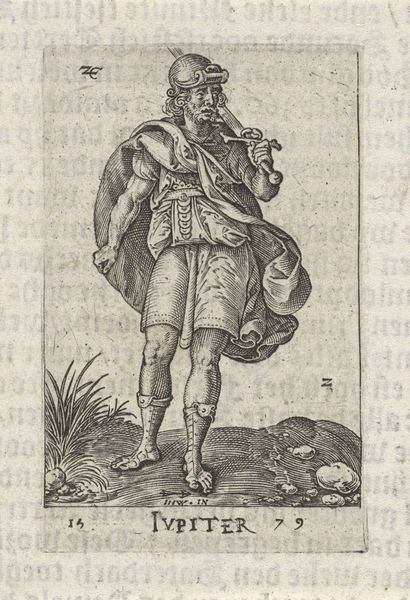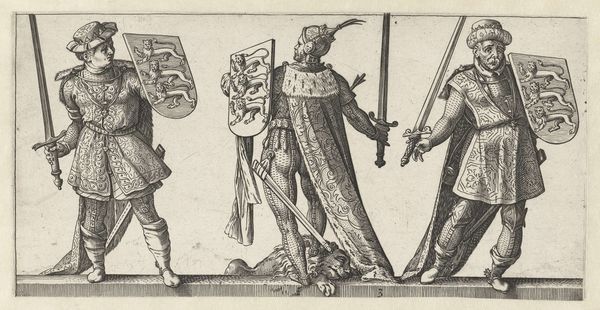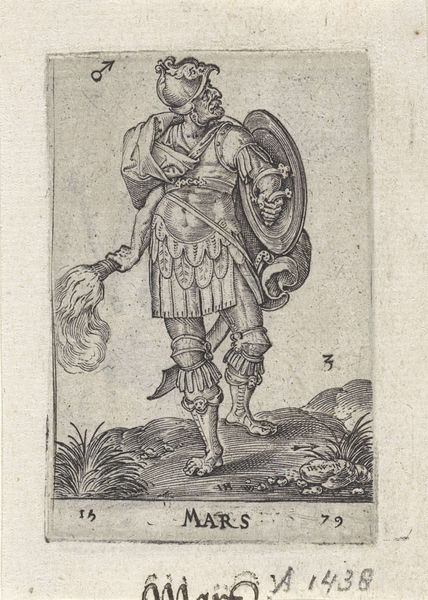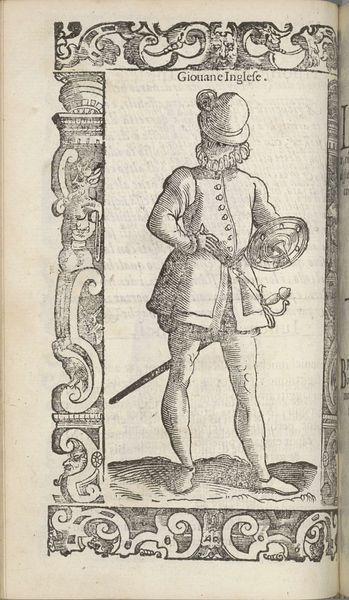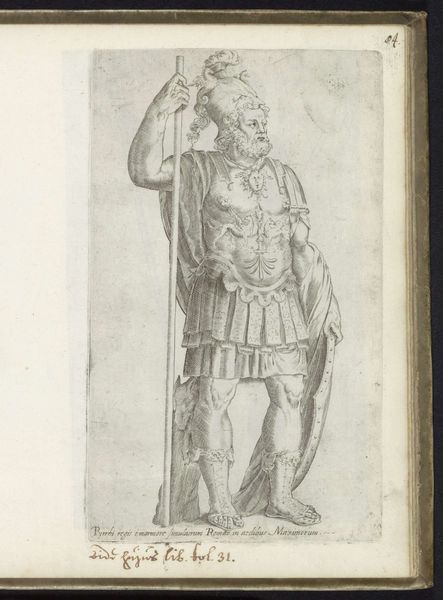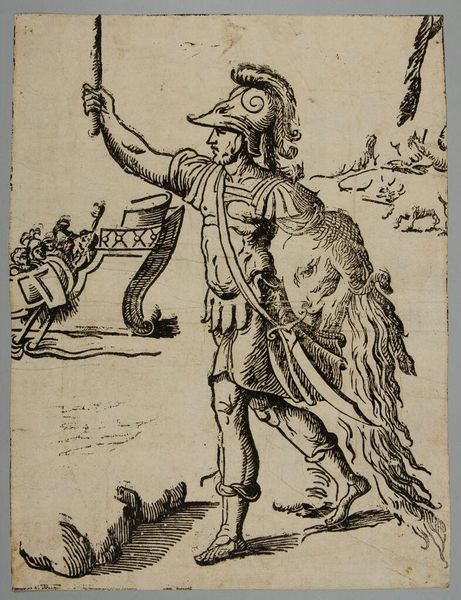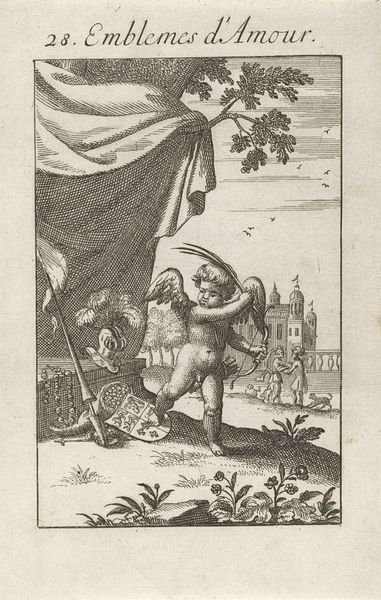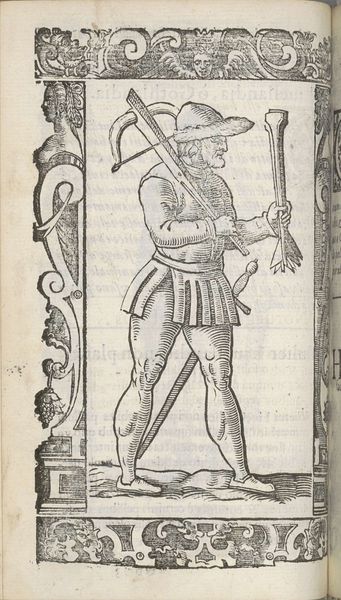
print, engraving
# print
#
mannerism
#
figuration
#
history-painting
#
engraving
Dimensions: height 327 mm, width 201 mm
Copyright: Rijks Museum: Open Domain
Curator: Pieter van der Borcht the Elder's "De reus Antigoon," created between 1594 and 1595, immediately brings a certain oppressive grandeur to mind. Editor: Oppressive is definitely the word. Look at the sheer verticality, the figure's hulking physique dominates the frame and looms ominously over the small figures gathered at his base. The textures alone convey a powerful sense of might and dread. Curator: Indeed. Borcht's Mannerist style lends itself to such visual drama. Observe how the composition manipulates perspective, compressing space and distorting proportions to amplify the figure’s scale and the tension inherent in its symbolic weight. The lines of the engraving form an intriguing structural cage. Editor: Speaking of symbolic weight, the figure is Antigoon, a mythical giant slain by the hero Brabo, and thus tied to the founding myth of Antwerp. The symbols speak volumes: Antigoon, clutching the severed hand and demanding toll, represents tyranny, while Brabo embodies the spirit of liberation and free commerce. This struggle reverberates with the 16th-century context. Curator: Precisely. The print employs the visual language of giants and heroes, mythologizing resistance and resilience. Semiotically, the placement of the figure's body is key here, almost a diagonal structure in this plane that suggests a dynamism between top and bottom—oppressor and oppressed. Editor: The pedestal is just as critical. See how the defeated populace gathers? Their defeated poses amplify the story of Antwerp under foreign oppression. Each person symbolizes different emotional or circumstantial outcomes. There is real anthropological heft in how the engraving captures collective historical trauma and resilience. Curator: True, this cultural encoding builds deeper meaning within what seems, initially, like a pure formalism. Van der Borcht's line work reinforces these layers of cultural signification; the varying intensities, for instance, push the figure further from flatness toward our contemporary sphere, deepening the viewer’s experience. Editor: Van der Borcht does manage to convey an atmosphere dense with complex cultural meanings, which even in a starkly minimalist rendering speaks volumes. It seems that, beneath the overt demonstration of physical strength, lie enduring messages about justice, community, and hope in times of distress. Curator: A most insightful consideration of form and iconography. A reminder that structure reveals layers of cultural significance, not just in spite of it.
Comments
No comments
Be the first to comment and join the conversation on the ultimate creative platform.
